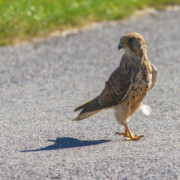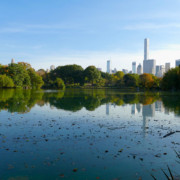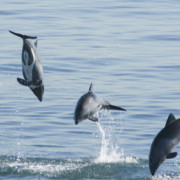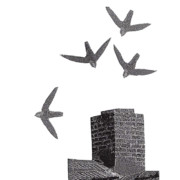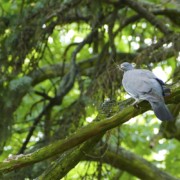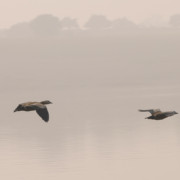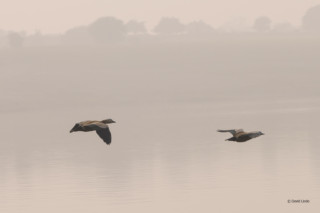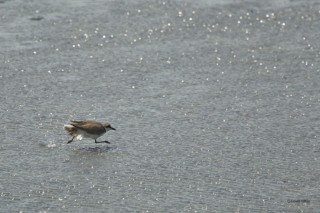Birding is literally a way of life for me. I have been fascinated by feathered creatures since before I can remember. Throughout the majority of my birding life, thinking about birds typically brings to mind those grand wild places of our planet Earth. However, one of the greatest discoveries that I have made as a birder is that birds are amazingly adaptable animals that will readily take advantage of those not so wild places.
I grew up in somewhat rural Illinois, USA. Granted, my hometown wasn’t located in pristine wilderness, but we lived far enough away from the hustle and bustle of Chicago and other nearby cities that I never truly knew what living in an urban setting felt like. Fast-forward 15 or so years and I find myself living and working in the midst of one of the largest cities in the United States: Columbus, Ohio. Columbus is home to more than a million people and is currently ranked as one the 20 largest cities in the country. I was shocked to learn this upon arriving and I couldn’t help but wonder if living in such a vast concrete landscape would cramp my birding style.
After 4 years and much exploration, I have to hand it to this city for their conservation-mindedness and for setting aside quite an array of green spaces. The Columbus Metro Park system is phenomenal and I always feel like I can temporarily escape the constant pressures of this rapidly developing urban center. Despite all of these local birding perks, I mustn’t forget about my local patch and the constant surprises that come from frequent, almost daily pilgrimages.
I work at The Ohio State University and I’m fortunate that I don’t have to drive into work on a daily basis. My wife and I live close enough to the campus that I can easily walk there in about 25 minutes. The best bit about this “commute” is that walking brings me in direct contact with an amazing little birding jewel consisting mostly of scattered woodlots with some small areas of scrub and farm field. To the average citizen, it’s not much to look at, but I had high hopes for the place when I first started investigating the area. I figured that something was better than nothing and this mentality has certainly paid off.
The worth of my new patch quickly revealed itself one day in early May. The northbound journey of millions of Neotropical migrants was in full swing and fitting weather conditions encouraged hundreds of dazzling songbirds to take advantage of this vegetation island. Birds were everywhere and I just couldn’t keep up with all of the motion. I was definitely impressed with my list of 15 species of wood-warblers (not counting the “Brewster’s” Warbler hybrid) and the additional assortment of flycatchers, thrushes, vireos, and orioles. That first spring was phenomenal, but it didn’t stop there. In fact, my patch has provided top notch birding year-round.
The incredible rush accompanying a stellar bout of spring birding can often leave a birder feeling a bit jaded, especially with the onset of lazy summer heat. I was committed to forging on through the summer months. I wanted to see what really lived there. Any bird can stop anywhere along the way when it’s traveling from Point A to Point B. Could this small isolated patch have been a Point B for some? What I discovered was eye opening.
I never thought that such a place could host such an amazing diversity of nesting species! Nesting Ruby-throated Hummingbirds. Dueling Willow Flycatchers. Drumming woodpeckers of at least 3 species. Hunting Red-shouldered Hawks and a successfully breeding pair of Bell’s Vireo? I do not lie…in the middle of Columbus, Ohio…in a small patch of scrub about 1.5 hectares in size…surrounded by pavement.
Unfortunately, I don’t have the time to go into detail about Fall and Winter birding at my West Campus Woodlots. In my opinion, this place is a birding hotspot. Yeah, yeah…people would likely call me crazy after hearing me make such a claim, but I’m serious. It has definitely changed my outlook on what birding is and can be. Indeed, I am an Urban Birder. I can’t imagine forgoing the opportunity to bird just because I’m in an urban setting. Birding doesn’t need to be reserved for those infrequent jaunts to migration hotspots or prime wildlife preserves. Any time, any place…the greatest discovery a birder can ever make.
Aaron Boone


